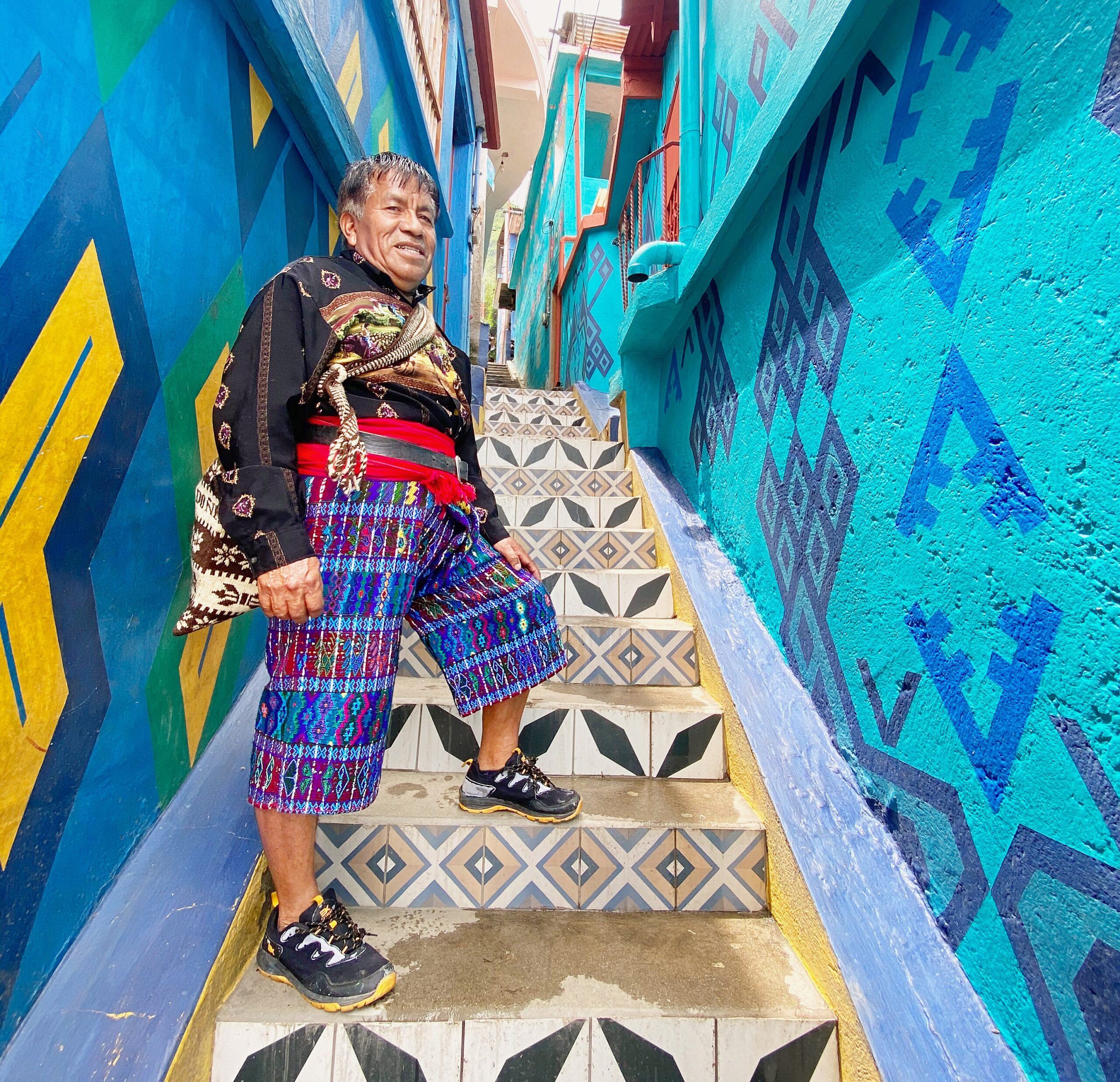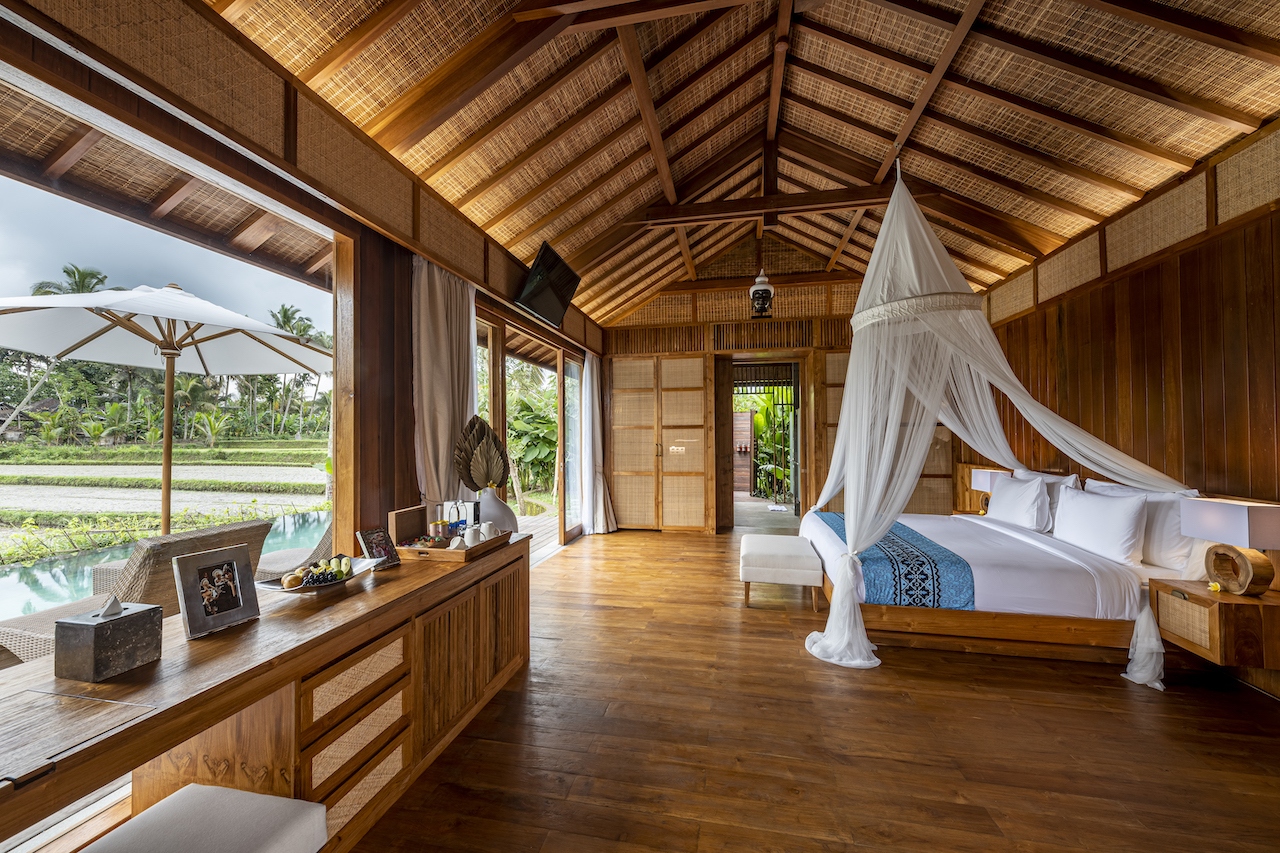

From painters and weavers to hoteliers, a movement of women in Guatemala fight for financial empowerment and to keep indigenous traditions alive.
I’m tentatively painting a Mayan vector of quetzal — Guatemala’s national bird — next to ocean waves blooming from a pink wall. It’s just one of the designs in the rows of bright, stencilled butterflies and volcanos lining the exterior of a navy-blue wooden house, like a child’s art project come to life. The house I’m painting on is one of the 900 buildings in Santa Catarina Palopó, Guatemala, that have transformed the lakeside town into a cultural destination. The dynamic project behind it — Pintando Santa Catarina Palopó — adds one more reason to visit one of Guatemala’s most popular destinations, Lake Atitlán.
READ: 9 Awesome Dining Experiences in Monaco This Summer
Santa Catarina Palopó sits in Guatemala’s highlands and is one of the twelve distinct Mayan pueblitos (settlements) surrounding the 1,000-foot deep lake’s teal blue water. Tourists come for the indigenous traditions and what famed Brave New World author Aldous Huxley called “the most beautiful lake in the world.”

However, beyond the destination’s beauty, there is a movement of women championing heritage by engaging tourists with local culture. This is salient as Guatemala has the highest percentage of indigenous population in Central America, with more indigenous women than men. These women often face rampant discrimination, poverty and barriers to medical care and education. The proliferation of women-led collectives and projects brings considerable autonomy, sometimes making women the primary earners in their families while preserving fading traditions.
READ Island Shang Launches The Shangri-La Suite
Pintando Santa Catarina Palopó is among dozens of exceptional, often indigenous women-led projects introducing travellers to Guatemalan culture in Lake Atitlán. Tourism to the region and Guatemala is booming. Statistics show an 87% increase in the total number of foreign visitors to Guatemala in 2023 as compared to 2022. Airlines have also noticed the sharp increase, with Alaska Airlines launching its first route from Los Angeles to Guatemala City last December.
The Hotelier Championing Guatemalan Women
Even before the current travel uptick, hotelier and native Guatemalan Claudia Bosch championed tourism and indigenous heritage preservation. In 2016, she teamed up with Santa Catarina Palopó natives, entrepreneurs and journalist Harris Whitbeck to develop the Pintando Santa Catarina Palopó, not only to beautify the local homes and build community but to drive tourism to Lake Atitlán. The project has been a resounding success, revitalising a declining town.

Volunteering at Pintando Santa Catarina Palopó is a popular experience offered at Bosch’s Casa Palopó, a fifteen-room boutique hotel perched above the lake. This luxury and woman-owned-and-run hotel is a design-forward Relais & Châteaux property of rich blue and rust stucco walls displaying and selling local female handwoven textiles, art, photographs and paintings. Ten per cent of the hotel room rate is also funnelled back into the local community. That money is returned to the guests to be donated to local projects or to purchase locally-made honey, clothing, coffee and more. Bosch purchased the hotel in 2010 after falling in love with it as a guest and brought in local artists Katy Jongezoon and Danna Nasser for much of the artwork painted onto hotel walls.
My room has richly jewel-toned Citrine walls, textiles and Guatemalan décor reflective of Mayan indigenous heritage. The balcony opens to lake views with three 10,000-foot-high volcanoes in the distance — Atitlán, Tolimán and San Pedro. I feel more like a guest in a wealthy friend’s private home, and later learn that the property is actually a private estate transformed into a hotel.
Handmade with Love and Tradition
The next day, I learn first-hand how the artisans make the textiles featured in my room and throughout the hotel. We take a scenic but bumpy boat ride from the hotel dock to San Pedro la Laguna, one of the most popular lakeside towns. The lively main street slopes uphill and is lined with multi-coloured pastel umbrellas overhead. Below my feet is a ten-foot-tall portrait of an indigenous woman wearing a huipiles, a traditional indigenous blouse. The huipiles is bright garnet, contrasting with her long jet-black braid cascading down her back.

To the left of the painting is the Women’s Textile Cooperative, an organisation of more than 30 indigenous backstrap weavers. These women hand-thread rugs, scarves and dresses using traditional Guatemalan techniques and organic dyes. Operated by the Tzʼutujil Mayan community, this co-op preserves ancient art while creating additional employment opportunities for indigenous mothers.
Our workshop teacher, Rosa, walks us through each step of the painstaking process. She effortlessly hand spins the yarn onto the loom and invites me to try. I’m nervous and my fingers are clumsy. She makes it look so easy! I’m relieved when she takes over again, and we thankfully move on to the hand-dyeing process, which also takes finesse. Rosa demonstrates dipping the cloth into natural plant tints, such as carrots, hibiscus flowers and coconut shells. I leave with a soft, cherished white kimono dotted with azure Mayan print. Rosa tells me it took an entire week to weave.

Afterwards, we dip next door into Q’amaneel, another women’s cooperative that teaches a medicinal plant workshop and tends a garden to keep ancient natural therapeutic traditions alive. On a garden tour, I learn about the nutritious moringa plant used to boost the immune system and take home eucalyptus tea from the shop for my recurring sinus issues.
Leaving destinations with something locally made is a priority, but my trip to Guatemala was one of the few times I got to leave something behind. My painting leaves a tiny mark in Santa Catarina Palopó while teaching me about the rich heritage of Guatemalan women and community. I’m so grateful to the women along the way who shared a slice of their lives with me.
For more Experiences click here.









































